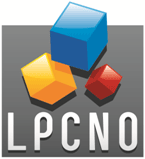Hard magnetic nanoparticles for catalysis
CHEMISTRY & GREEN CHEMISTRY

Lab: LPCNO
Duration: NanoX master Internship (8 months part-time in-lab immersion)
Latest starting date: 2023-09-04
Localisation: NCO Team LPCNO INSA Toulouse
Supervisors:
Lise-Marie Lacroix lmlacroi@insa-toulouse.fr
Bruno Chaudret chaudret@insa-toulouse.fr
This research master's degree project could be followed by a PhD
Work package:
Magnetically induced catalysis has recently developed as a simple and elegant way to perform organic reactions in solution. The advantage of this technique is to reach very high temperatures at the surface of nanoparticles used as a colloidal catalyst while keeping a relatively low mean temperature of the surrounding medium. It is therefore possible to carry out in mild conditions (3 bars H2 in a Fischer-Porter bottle) difficult reactions such as hydrodeoxygenation of aromatic ketones, a reaction of interest for biomass valorisation which is traditionally carried out at high temperature and high pressure (>250°C, 50 bars H2).1 The NCO team of LPCNO has demonstrated the proof-of-concept of this reaction using iron carbide nanoparticles of 13 nm, the surface of which has been modified by ruthenium.2 On this system we have shown using a catalytic method that in toluene while the mean temperature of the medium was near 110°C, the temperature at the surface of the nanoparticles was 240°C.3
This achieved, it would be attractive to develop nanoparticles easily soluble either in organic solvents or in water depending on their ligand shell and which could reach very high surface temperatures while keeping a low temperature of the solvent. Although this seems contradictory, this would require to develop small catalytically active nanoparticles but displaying notable heating power. This can in principle be obtained using nanoparticles exhibiting a very high magnetic anisotropy.
CoPd nanoparticles seem particularly attractive since they are made of catalytically active metals and since in the bulk CoPd is a hard-magnetic phase. It is expected that at a size between 5 and 8 nm we could obtain nanoparticles ferromagnetic at room temperature but not large enough to heat vigorously the solvent. Such a configuration is required to transform substrates which give rise to heat sensitive products, e.g. amination reactions for example.
Therefore the stay will consist in synthesizing a new generation of bimetallic cobalt nanoparticles using various precursors (Pd2(dba)3, Pd(acac)2, Co{N(TMS)2}2(THF); Co(ƞ3-C8H13)(ƞ4-C8H12), …) and ligands (N-heterocyclic carbenes, palmitic acid, hexadecylamine, …) in order to reach the required size range. Then, we will use a test reaction, hydrodeoxygenation of acetophenone, to evaluate the activity of the particles and to measure their surface temperature after comparing the activity of magnetic and thermal catalysis.
The student will learn organometallic synthesis techniques working in an inert atmosphere (Schlenk line, glove-box) as well as GC-MS and spectroscopic methods (NMR, IR). In addition, the student will be trained into physical methods: TEM, SEM and magnetism (magnetic measurements using a VSM, SAR determination).
References:
1- Estrader, M. ; Soulantica, K. ; Chaudret, B. Organometallic Synthesis of Magnetic Metal Nanoparticles. Angew. Chem. Int. Ed. 2022, 61, e202207301
2- Díaz-Puerto, Z. J.; Raya-Barón, A.; van Leeuwen, P. W. M. N.; Asensio, J. M.; Chaudret, B. Determination of the surface of magnetically heated nanoparticles using a catalytic approach. Nanoscale. 2021, 13, 12438-12442
3- Asensio, J. M.; Miguel, A. B.; Fazzini, P.; van Leeuwen, P. W. N. M.; Chaudret, B. Hydrodeoxygenation Using Magnetic Induction: High‐Temperature Heterogeneous Catalysis in Solution. Angew. Chem. Int. Ed. 2019, 58, (33), 11306-11310
Areas of expertise:
Chemical synthesis
Organometallic chemistry
Nanochemistry
Catalysis
Magnetism
Required skills for the internship:
Knowledge of organic and inorganic chemistry
practise of homogeneous and/or heterogeneous catalysis
basic knowledge of magnetism
